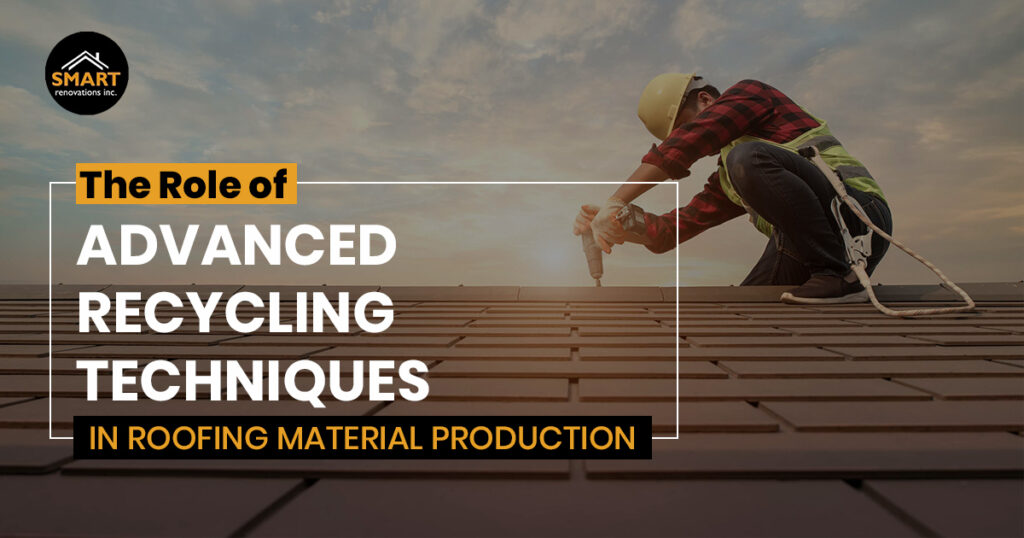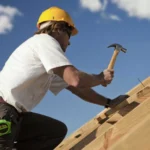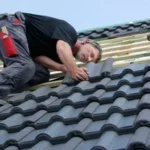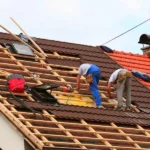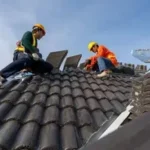In an age where the clamor for sustainability resounds through the corridors of industry, the art of roofing finds itself on the precipice of transformation. As we gaze upon the structures that grace our cities, it becomes apparent that the materials from which they are forged must evolve, adopting practices that honor both the earth and the craftsman’s skill. Thus, we turn our attention to the role of advanced recycling techniques in roofing material production, particularly in the realm of Spanish tile roof repair, where tradition and innovation intertwine like threads in a grand tapestry.
The Importance of Sustainable Roofing
As the green movement swells in urgency, the roofing industry is not exempt from scrutiny. The production and disposal of roofing materials contribute significantly to environmental degradation. Traditional methods often lead to waste and an unsustainable cycle of resource extraction. Thus, the adoption of advanced recycling techniques emerges not merely as an option, but as a necessity—a clarion call for the guardians of our built environment.
Environmental Impact of Roofing Materials
The impact of roofing materials on the environment is profound. From asphalt shingles to ceramic tiles, the production processes consume vast amounts of energy and raw materials, while disposal often results in landfills brimming with waste. Spanish tile roofs, known for their aesthetic charm and durability, also face challenges when it comes to longevity and repair. Therefore, integrating recycling techniques into their production can mitigate these effects, ushering in a new era of eco-conscious craftsmanship.
Also check out these:
Understanding How Long Tile Roofs Typically Last
Your Guide to Quality Roofing for Office Buildings
Advanced Recycling Techniques: A Renaissance in Roofing
1. Repurposing Waste Materials
At the heart of advanced recycling lies the concept of repurposing. Waste from previous roofing projects can be transformed into new materials, reducing the need for virgin resources. For instance, crushed ceramic tiles from damaged Spanish roofs can be blended with new materials to create durable roofing solutions. This practice not only minimizes waste but also imbues the new products with a rich narrative steeped in history.
2. Closed-Loop Systems
The advent of closed-loop recycling systems marks a pivotal stride toward sustainability. In this process, roofing materials are collected, processed, and reintroduced into the production cycle. By creating a self-sustaining loop, manufacturers can significantly reduce their environmental footprint. For example, asphalt shingles can be recycled into new shingles, allowing for a continuous cycle of use that benefits both the industry and the planet.
3. Innovative Material Composition
The use of advanced technologies has birthed innovative materials designed for recycling. Modern roofing materials may incorporate recycled content, such as plastics and rubber, blended with traditional components. This not only enhances the durability and performance of the roofs but also lessens the reliance on non-renewable resources. Spanish tile roofs, when integrated with these innovative materials, can achieve greater longevity and resilience against the elements.
4. Enhancing Aesthetic Appeal
Recycling techniques are not solely about functionality; they also offer aesthetic benefits. The incorporation of recycled materials can lead to unique textures and colors, enriching the visual appeal of roofing products. By blending traditional Spanish tile designs with modern recycled elements, homeowners can achieve a look that honors heritage while embracing contemporary sustainability.
The Process of Recycling Spanish Tile Roofs
1. Assessment and Removal
The journey of recycling begins with the assessment of existing Spanish tile roofs. Experienced professionals evaluate the condition of the tiles, determining which can be repaired and reused. The removal process must be executed with care, ensuring that as many tiles as possible are salvaged for future use. This process not only reduces waste but also preserves the character of the original structure.
2. Cleaning and Sorting
Once removed, the tiles undergo a meticulous cleaning and sorting process. This step is crucial for ensuring that only high-quality materials are recycled. Damaged tiles may be ground down, while intact ones are prepared for reinstallation or repurposing. The sorting process allows for the identification of tiles that can still serve a functional purpose, thereby extending their lifespan.
3. Manufacturing New Materials
The cleaned and sorted tiles can then be processed into new roofing materials. Through advanced recycling techniques, these tiles are transformed into crushed aggregates or blended with other materials. The result is a new product that retains the charm of Spanish tiles while benefitting from the innovations of modern manufacturing.
4. Installation and Repair
The final stage involves the installation of the newly crafted roofing materials. Skilled artisans adept in Spanish tile roof repair utilize their expertise to ensure that the new materials blend seamlessly with the existing structure. This harmonious integration not only restores the roof’s beauty but also fortifies it against the challenges of time and weather.
The Economic Benefits of Recycling in Roofing
Cost Savings
The integration of advanced recycling techniques in roofing material production offers significant cost savings. By utilizing recycled materials, manufacturers can reduce raw material costs, which translates to savings for consumers. Homeowners opting for recycled roofing solutions can expect lower installation costs without sacrificing quality or aesthetics.
Job Creation
The shift towards recycling also fosters job creation within the community. As the demand for recycled roofing materials increases, so too does the need for skilled labor in the collection, processing, and installation of these products. This creates a positive ripple effect, bolstering local economies and encouraging sustainable practices.
Market Differentiation
In a competitive market, companies that embrace advanced recycling techniques can differentiate themselves from their peers. By promoting their commitment to sustainability and eco-friendly practices, they attract environmentally conscious consumers who value ethical choices. This not only enhances brand reputation but also fosters customer loyalty.
Also check out these:
Choosing the Right Gutters for Your Metal Roof
Self-Healing Roofs: Innovations in Durable Materials
Challenges and Considerations
Quality Control
While the benefits of recycling are manifold, challenges remain. Ensuring consistent quality in recycled materials is paramount. Manufacturers must invest in rigorous testing and quality assurance processes to guarantee that recycled products meet industry standards. This diligence ensures that consumers receive roofing materials that are both durable and reliable.
Consumer Education
Another challenge lies in consumer perception. Many homeowners may be unaware of the advantages of recycled roofing materials or harbor misconceptions about their performance. Educating consumers about the benefits of advanced recycling techniques is essential for fostering acceptance and encouraging widespread adoption.
Conclusion: A Sustainable Future Awaits
In this epoch of environmental awareness, the role of advanced recycling techniques in roofing material production stands as a beacon of hope. As we navigate the complexities of sustainability, it is clear that the integration of recycling practices offers a pathway toward a greener future.
Through the lens of Spanish tile roof repair, we witness the fusion of tradition and innovation, where the past informs the future. By embracing these advanced techniques, we not only honor the artistry of roofing but also contribute to the preservation of the planet.
As we move forward, let us champion the cause of sustainability within the roofing industry, forging a legacy that future generations can admire. In the words of Shakespeare, “We know what we are, but know not what we may be.” Together, we can shape a future where roofing materials are both beautiful and environmentally responsible, ensuring that our structures stand as testaments to the harmony between craftsmanship and nature.
Contact Smart Renovation Inc today! Check our google store: Smart Renovation Inc

